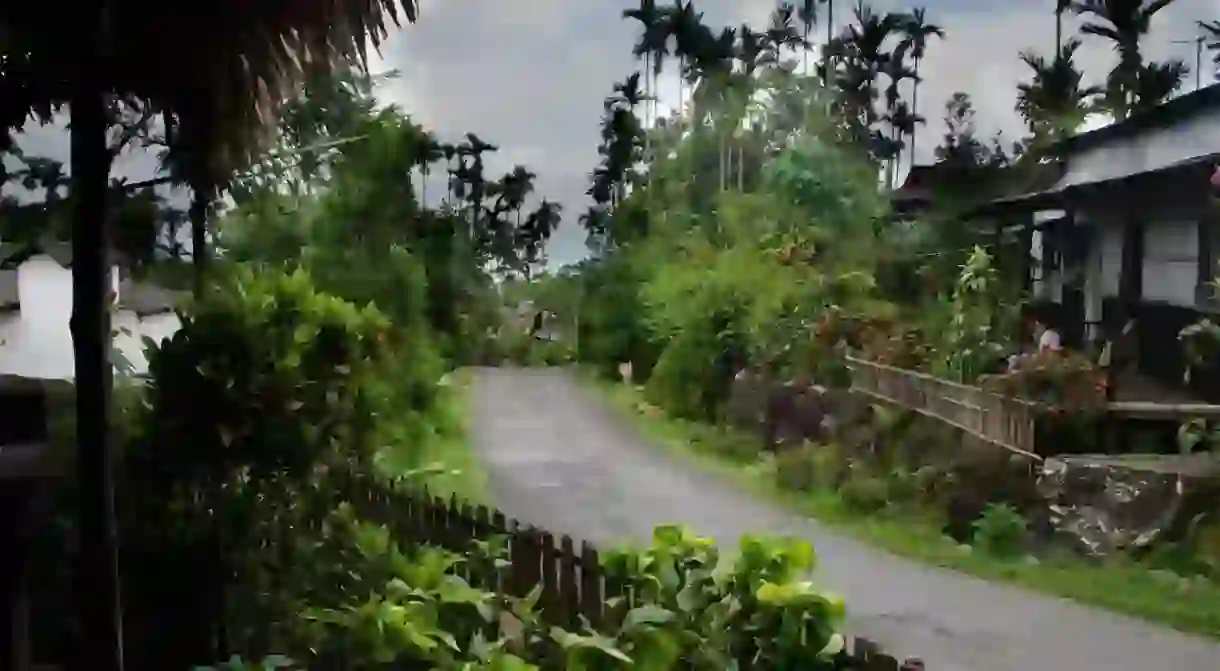Did You Know Asia’s Cleanest Village Is in India?

While the metro cities are shrouded in pollution, dirt and noise, a village in India named Mawlynnong is setting an example for cleanliness in the whole of Asia. Nestled in Pynursla Block amidst the lush greenery of the East Khasi Hills district in the northeastern state of Meghalaya, Mawlynnong is, in literal terms, clean and green.
Mawlynnong and cleanliness
In 2003, Mawlynnong, also called ‘God’s Own Garden’, received the tag of being the ‘Cleanest Village in Asia’, and in 2005, it received the status of the ‘Cleanest Village in India’ by Discover India Magazine. This village continues to live up to this status. In a 2015 radio address, India’s prime minister, Mr Narendra Modi, acknowledged this community and considered it a model of cleanliness for the whole country.
http://instagram.com/p/BV9k49SlYUQ/
With just 500 people and 95 households, this village is home to pristine natural beauty, serenity, friendly locals, warm hospitality, a picturesque setting, adventurous activities, and above all, cleanliness. The village folk’s penchant for eco-friendly living – from extensive green spaces to bamboo dustbins to bamboo houses and immaculate concrete roads and walkways adorned with colourful creepers – has made it the cleanest village in Asia. Plus, the people of this community not only clean their house but also clean the village roads and plant trees regularly. In other words, cleanliness is deep-rooted in their lifestyle!

Every house in the village has a small garden filled with fruit-bearing trees and flowering plants. Also, in front of every house, there is a huge rock with a deep crater in it to collect rainwater. There are also bamboo dustbins placed at every 30 meters (98.4 feet) on the roads. The garbage collected throughout the day is thrown into a pit and then used as fertiliser.
Also, smoking is prohibited, and plastic bags are strictly banned, thus, maintaining an environment-friendly setting. Anyone who does not abide by these rules will have to pay a hefty fine.
http://instagram.com/p/BV96IRIFimQ/
The emphasis on cleanliness and hygiene is rooted in its past. About 130 years ago, an outbreak of cholera ravaged the village. With no medical facilities, the only possible way to overcome the cholera epidemic was through ‘cleanliness’, as suggested by the early Christian missionaries. The villagers still maintain this age-old tradition.

The people and culture of Mawlynnong
The inhabitants of this village are from the Khasi tribe, and they make up nearly 50% of the state’s population. The community follows the matrilineal rule of society, where the children of the family get the surname of their mother, and the wealth and property of the household are passed down to the youngest daughter in the family. There is no doubt that this village has set an example for women empowerment. The village also records a 100% literacy rate, and the primary school in the village has a dropout rate of zero. Apparently, children in the community are taught about cleanliness in the school at an early age.

The main occupation in this village is agriculture; they grow a variety of fruits, bay leaves, local spices and the betel nut, which is their main crop. And their staple food is fish and rice, and their recipes use organically grown vegetables. Some must-try dishes include jadoh (a rice-and-meat-based delicacy) and tungrymbai (a mix of fermented soybean, local spices and bamboo leaves).
Attractions
This village is also home to the Living Root Bridge, a man-made bridge that is a perfect alternative to wooden bridges that take a beating, and often destroyed, in the monsoon season. The bridge, hanging above a stream, is composed of intertwining aerial roots of rubber trees that grow on both sides of the creek.
http://instagram.com/p/BV11UntAbwt/
Another famous attraction of this village is The Sky Walk, an 85-foot-high (25.9 meters) tower made of bamboo. The journey to the top is a bit demanding due to the four circular layers of the bamboo ladder, yet the views are rewarding. Once you reach the top of The Sky Walk, you will witness a mesmerising view of India as well as Bangladesh landscape, since the village is nestled on the Indo-Bangladesh border. Visitors must pay an entry fee of INR 10.
Visitors can have a tête-à-tête with nature at the Mawlynnong Waterfall, which is a beautiful waterfall surrounded by lush greenery. You need to take a trek through the rocky pathway to witness the glory of this natural wonder.

With the village folk associating cleanliness with Christianity, it should come as no surprise that a must-visit landmark would be a place of worship. The charming Church of Epiphany is a 100-year-old black-and-white structure surrounded by verdant land plus palm and orange trees.
http://instagram.com/p/BWVcnaiFFDP/
Accommodation
There are some homestays in the village with basic facilities. Epiphany Society Guest House, Ila Jong Homestay, Sahpyngngad Homestay, Hala Tyngkong and Bangladesh View Homestay are all good options. The average cost per night is INR 2000 ($31) for a concrete room and INR 4000 ($62) for a traditional bamboo cottage.
How to get there
Visitors can reach the village via roads from nearby areas such as Shillong and Cherrapunji, rail or aeroplane. The nearest railway station is Guwahati, approximately 172 kilometres (106 miles) from Mawlynnong, while the nearest airport is in Shillong, about 78 kilometres (48 miles) away – visitors can take a bus and/or taxi the rest of the way.













